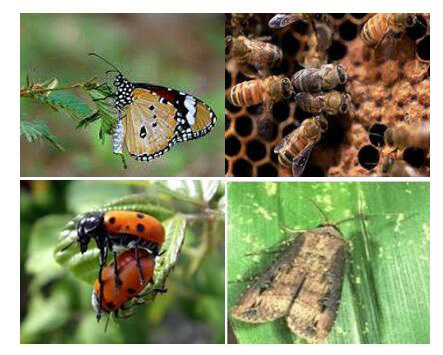Insect pheromones represent a captivating and complex chemical communication system, acting as invisible messengers that orchestrate the behaviors and interactions among various insect species. These chemical signals are not mere curiosities; they are vital tools that insects rely upon to navigate their environment, locate food, attract mates, and ensure the survival of their species. Exploring the realm of insect pheromone uncovers a complex network of simple and sophisticated compounds that dictate essential life processes.
Chemical Composition and Diversity
The chemical landscape of insect pheromones is diverse, comprising both simple and complex molecular structures. At a basic level, many insect pheromones are straight chain compounds, including hydrocarbons, alcohols, esters, and aldehydes. These structures may seem basic, yet they play crucial roles in the behavioral ecology of insects. More intricate pheromones include side chain compounds, ketones, and epoxy compounds. For instance, alarm pheromones often incorporate aldehyde groups and unstable hydrocarbons,a testament to their high volatility, which is essential for rapid dissemination in stressful situations.
Functional Classification of Pheromones
Pheromones in the insect world are categorized based on their functions, each playing a specific role:
- Trail Pheromones: Trail pheromones are indispensable for the foraging efficiency of social insects, such as ants and termites. These pheromones are secreted by foragers when they discover a reliable food source, creating a chemical trail that serves as a navigational guide for other members of the colony. This trail allows worker ants to march in organized lines between the nest and food supply, maximizing energy efficiency and harvesting efforts. As more ants follow and reinforce the trail, the chemical signal intensifies, thereby ensuring that the colony can exploit food resources effectively and return them to the nest.
- Aggregation Pheromones: Aggregation pheromones play a crucial role in facilitating insect social behaviors by encouraging individuals to congregate in specific locations for mutual benefit. Whether it is for feeding, mating, or protection, these pheromones enable insects to form large gatherings that enhance their survival and success. For instance, bark beetles release aggregation pheromones to amass large numbers to colonize tree bark effectively, while other insects may use them to amass around food resources or shelters. The collective action fostered by aggregation pheromones often confers advantages such as increased mating opportunities, enhanced defense against predators, and better exploitation of resources.
- Alarm Pheromones: IWhen danger looms, insects rely on alarm pheromones to rapidly convey urgency to their peers, prompting swift defensive reactions. Upon detecting a threat, an insect may release these volatile compounds to alert the colony or group, triggering alarm behaviors ranging from aggressive defensive postures to coordinated escape. In honeybees, for example, alarm pheromones can incite guard bees to defend the hive aggressively against intruders. This rapid communication ensures that insects can mount a collective response to threats, thereby enhancing their chances of survival amidst environmental challenges.
- Sex Pheromones: Sex pheromones are integral to reproductive success, functioning as attractants that enable insects to locate and identify suitable mates within their species. Often emitted by females, these pheromones can travel across distances, guiding conspecific males toward prospective partners. The specificity of sex pheromones ensures that even amidst vast populations and diverse habitats, individuals of the same species can find each other to mate. Moths, for example, are renowned for their reliance on sex pheromones in facilitating mating encounters that are essential for perpetuating the species.
Ecological and Evolutionary Significance
Beyond mere communication, pheromones are integral to ecological interactions and evolutionary processes within insect populations. By conveying critical information about food availability, predator presence, and mating opportunities, pheromones influence individual fitness and, consequently, evolutionary trajectories. The specificity and variability of pheromone compounds often reflect adaptation to specific ecological niches, demonstrating a co-evolutionary dance between insects, their environment, and ecological communities.
Applications in Pest Management
Since the 1960s, insect pheromone interference has emerged as a pioneering pest control technology. Its high efficiency, non-toxicity, and lack of environmental harm make it an attractive and sustainable alternative in both indoor and outdoor settings. The application of pheromones in pest management revolves around several strategic approaches:
- Monitoring: Pheromones play a crucial role in detecting insect presence, indicating infestation levels, and helping to evaluate the most suitable treatment and application timing. Through continuous monitoring, farmers can make informed decisions about management strategies, ensuring timely interventions.
- Mass Trapping: Pheromones are used to capture a significant number of insects in traps, reducing or eliminating the need for other phytosanitary treatments. This approach helps control pest populations effectively while minimizing chemical use.
- “Attracting and Killing”: Similar to mass trapping, this strategy involves using pheromones to lure insects to a designated location where they are subsequently exterminated. This targeted approach limits the impact on non-target species, preserving ecological balance.
- Mating Disruption: By creating an environment saturated with specific pheromones, mating disruption techniques prevent males and females from locating each other, effectively impeding reproduction. This method reduces pest populations over time, decreasing the likelihood of substantial infestations.
Conclusion
The world of insect pheromones exemplifies nature’s ingenuity in evolving intricate communication systems crucial for insect survival and success. As research unveils more nuances of these chemical signals, the potential to harness their power for supporting sustainable agriculture and conservation efforts becomes increasingly viable. By applying pheromone-based strategies, we can manage pests effectively without compromising environmental health, fostering a harmonious coexistence between agricultural practices and ecological preservation.



